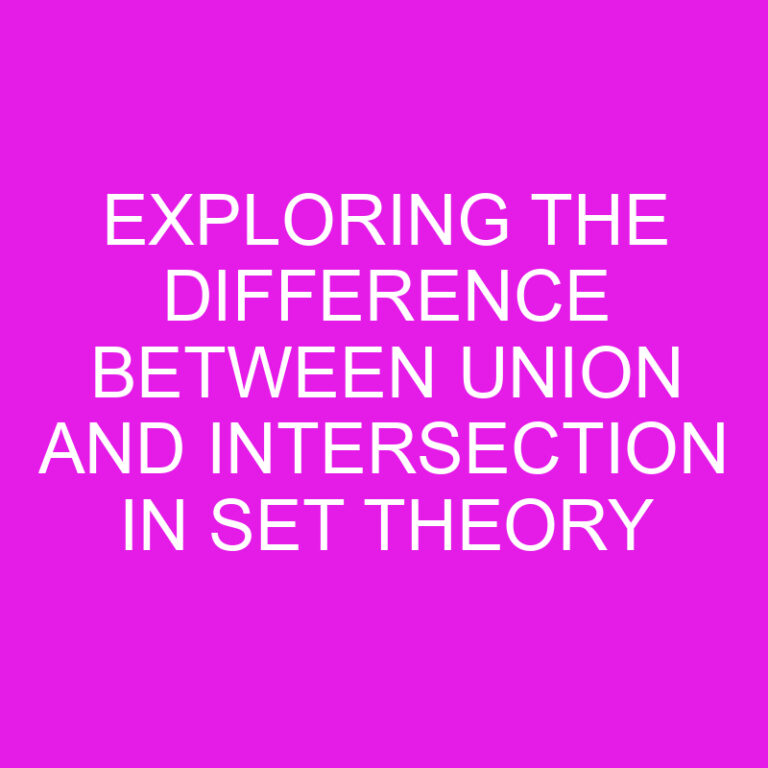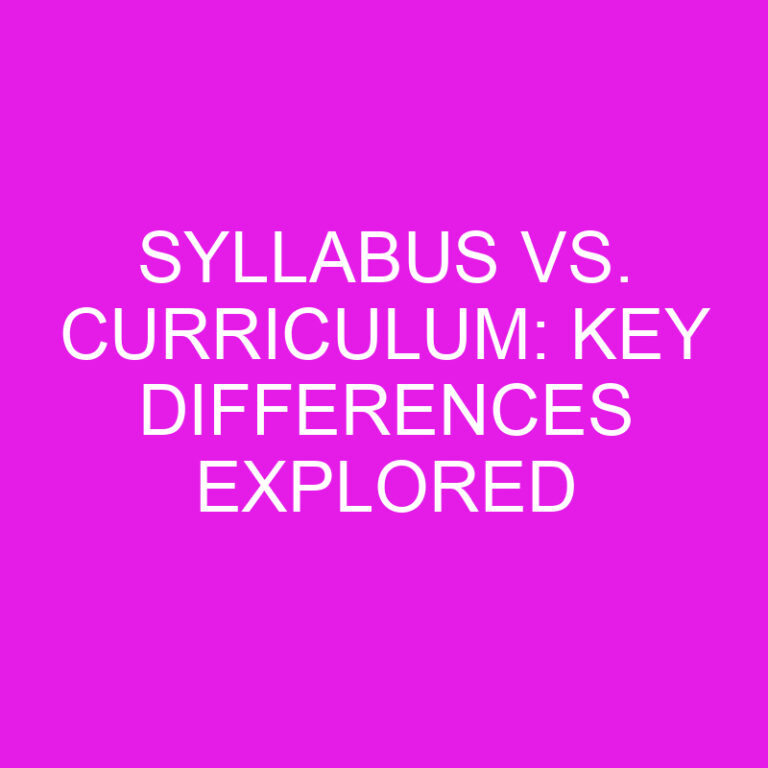
Have you ever wondered about the subtle nuances between two similar words? In the realm of language, even the smallest distinctions can have a significant impact on meaning. Today, I want to delve into the intriguing world of words and explore the difference between two terms that often get used interchangeably: proclivity and propensity. While these words may seem similar at first glance, they possess distinct connotations that set them apart. Join me as we unravel the intricacies of language and discover the true essence of proclivity and propensity. Let’s dive in!
Post Contents
Key Takeaways
- Proclivity refers to a natural inclination or tendency towards something, while propensity specifically refers to a tendency towards a particular behavior or action.
- Proclivity is often used in a wider range of situations, including personal interests, preferences, and general tendencies, while propensity is primarily used when discussing specific and focused behaviors.
- Proclivity suggests a leaning or inclination towards something naturally, while propensity emphasizes a stronger inclination towards a specific behavior or action.
- Understanding the etymology of proclivity and propensity enhances our comprehension of their meanings and usage.
- Both proclivity and propensity are not fixed traits and can change over time influenced by various factors such as experiences and environment.
- Examples of proclivity include hobbies, interests, and skills, while examples of propensity include risk-taking, violence, and procrastination.
What is Proclivity?
Proclivity is a term that is often used to describe a natural inclination or tendency towards something. It refers to a person’s predisposition or preference for a particular behavior, action, or opinion. When someone has a proclivity for something, it means that they have a strong inclination or leaning towards it. Proclivity is derived from the Latin word “proclivitas,” which means “inclination” or “tendency.”
Having a proclivity for something means that it comes naturally to you or that you are more likely to engage in it. It can be applied to various aspects of life, such as hobbies, interests, skills, or even personality traits. For example, someone may have a proclivity for sports, meaning they have a natural inclination towards participating in or watching sports activities.
Proclivity is often used in a positive sense, implying a favorable inclination towards something. However, it can also be used to describe negative tendencies or habits. For instance, someone may have a proclivity for procrastination, indicating a tendency to delay or put off tasks.
It’s important to note that proclivity is not a fixed trait. It can change or evolve over time as a person’s interests and preferences develop. Additionally, proclivity can be influenced by external factors, such as experiences and environment.
Understanding the concept of proclivity can help us better understand and acknowledge our own inclinations and preferences. By identifying our proclivities, we can make informed decisions and choices that align with our natural tendencies.
In the next section, I’ll delve into the meaning of the word “Propensity” and discuss its nuances in relation to proclivity.
What is Propensity?
Propensity is another term that is often used interchangeably with proclivity, but it carries a slightly different connotation. While proclivity refers to a natural inclination or tendency towards something, propensity refers specifically to a tendency towards a particular behavior or action.
Propensity is often used in the context of behavioral psychology or criminology to describe a person’s inclination or likelihood of engaging in certain actions. It can be influenced by a variety of factors, including genetics, upbringing, environment, and personal experiences.
Unlike proclivity, which can encompass a wide range of inclinations and tendencies, propensity is more focused and specific. It refers to a person’s probability of engaging in a particular behavior or action, such as a propensity for risk-taking, a propensity for violence, or a propensity for generosity.
Understanding one’s propensity can be useful in various contexts. In business, for example, understanding consumer propensities can help companies tailor their marketing strategies to better meet the needs and preferences of their target audience. In criminal justice, understanding the propensities of individuals can aid in risk assessment and rehabilitation efforts.
It’s important to note that propensity is not a fixed trait. It can be influenced and changed over time through various mechanisms, such as education, counseling, or life experiences. While certain individuals may have a natural propensity towards certain behaviors, it does not mean they are predetermined to engage in those behaviors.
Propensity refers to a person’s likelihood or inclination towards a particular behavior or action. It is a more focused concept than proclivity and is often used in the context of behavioral psychology or criminology. Understanding one’s propensity can provide valuable insights and aid in decision-making processes.
Differences in Connotation
When it comes to the words “proclivity” and “propensity,” there are subtle differences in their connotation. While the two words are often used interchangeably, understanding their distinctions can provide deeper insight into their usage.
1. Proclivity: A Natural Inclination
The word “proclivity” typically conveys a sense of a natural inclination or tendency towards something. It suggests a predisposition or a leaning towards a particular behavior, action, or interest. For example, someone might have a proclivity for music or a proclivity for taking risks.
2. Propensity: A Specific Tendency
On the other hand, “propensity” specifically refers to a tendency towards a particular behavior or action. It emphasizes a readiness or a likelihood of engaging in a specific activity. This word is often used in the context of behavioral psychology or criminology to describe someone’s inclination towards certain actions. For instance, a person might have a propensity for violence or a propensity for impulsivity.
While “proclivity” is more general and denotes a broad inclination, “propensity” is more specific and highlights a particular pattern of behavior or action. Understanding the nuances between these words allows us to express ourselves more precisely and capture the intended meaning.
3. Context and Usage
The choice between “proclivity” and “propensity” depends on the context and the level of specificity we want to convey. “Proclivity” is often used in a wider range of situations, including personal interests, preferences, and general tendencies. On the other hand, “propensity” is primarily used when discussing behaviors, actions, or tendencies that are more specific and focused.
While “proclivity” and “propensity” are similar in meaning, they have distinct connotations. “Proclivity” suggests a natural inclination or tendency, while “propensity” refers to a specific tendency towards a particular behavior or action. By understanding these nuances, we can better communicate our ideas and observations in various contexts.
Etymology of Proclivity and Propensity
Let’s delve into the fascinating etymology of the words “proclivity” and “propensity”. The origins of these words provide valuable insights into their meanings and usage.
The word “proclivity” has its roots in the Latin word “proclivitas,” which means “a natural tendency.” This Latin term is formed by combining “pro-” meaning “forward” or “in favor of” and “clivus” meaning “slope” or “inclination.” Together, “proclivity” embodies the notion of leaning or inclining towards something naturally.
On the other hand, “propensity” finds its origins in the Latin word “propensitas,” which also means “a natural inclination.” Its Latin root is formed by combining “propensus,” meaning “inclined” or “disposed,” and “tenere,” meaning “to hold.” Consequently, “propensity” conveys the idea of a stronger leaning or inclination towards a specific behavior or action.
Understanding the etymology of these words enhances our comprehension of their meanings and usage. While both words refer to natural tendencies or inclinations, “proclivity” suggests a general leaning or inclination towards something, while “propensity” specifically emphasizes a stronger inclination towards a particular behavior or action.
By appreciating the etymology and nuances of “proclivity” and “propensity,” we can communicate with precision and choose the word that best conveys the level of specificity we desire. This knowledge empowers us to express ourselves accurately in various contexts.
So, as we continue to explore the difference between “proclivity” and “propensity,” keep in mind their rich etymology and how it shapes their meanings. With this understanding, we can navigate the subtleties of language and convey our thoughts and ideas effectively.
Examples of Proclivity and Propensity
Having understood the distinction between “proclivity” and “propensity,” let’s explore some examples that illustrate their usage in different contexts. These examples will help to solidify our understanding of these words and their nuanced meanings.
- Proclivity:
- I’ve always had a proclivity for painting. Ever since I was a child, I was naturally drawn to picking up a brush and expressing myself through art.
- John has a proclivity for helping others. He is always the first to volunteer and lend a helping hand whenever someone is in need.
- Sarah has a proclivity for adventure. She constantly seeks out new experiences and is eager to try new things, whether it be skydiving, hiking, or traveling to far-off destinations.
- Propensity:
- James has a propensity for gambling. He finds himself irresistibly drawn to the thrill of games of chance, often spending hours at the casino or betting on sports events.
- The dog has a propensity for barking whenever someone approaches the front door. It’s become a habit for him to alert the family whenever there’s a visitor.
- Lisa has a propensity for procrastination. She struggles with starting tasks early and often finds herself rushing to meet deadlines.
By examining these examples, we can see that proclivity highlights a general tendency or inclination towards something, while propensity indicates a stronger inclination towards a specific behavior or action. Whether it’s a passion for art, a charitable nature, or a tendency towards risky behaviors, these examples showcase the various ways these words can be used in real-life situations.
Understanding the subtle differences between “proclivity” and “propensity” allows us to communicate more precisely and effectively. It enables us to choose the word that best conveys the level of specificity we desire. So the next time you want to describe someone’s inclination or tendency, consider which word would be most appropriate in context.
Conclusion
By exploring the differences between “proclivity” and “propensity,” we have gained a deeper understanding of these two words and how they can be used in various contexts. Through the examples provided, we have seen that “proclivity” emphasizes a general inclination or tendency towards something, while “propensity” suggests a stronger inclination towards a specific behavior or action.
Understanding these nuances is crucial for effective communication. By using the right word in the right context, we can convey our thoughts and ideas more precisely. Whether we want to express a general inclination or a stronger tendency towards a particular action, having a clear understanding of the distinctions between “proclivity” and “propensity” allows us to communicate with confidence and accuracy.
So, the next time you encounter these words, remember that “proclivity” points to a general inclination, while “propensity” suggests a stronger inclination towards a specific behavior. Armed with this knowledge, we can navigate the English language more effectively and express ourselves with greater precision.
Frequently Asked Questions
What is the difference between “proclivity” and “propensity”?
“Proclivity” and “propensity” are similar words that refer to inclinations or tendencies towards something. However, there is a subtle difference between them. “Proclivity” indicates a general tendency or inclination towards something, while “propensity” suggests a stronger inclination towards a specific behavior or action.
Can you provide examples of how to use “proclivity” and “propensity”?
Certainly! Here are some examples:
- “She has a proclivity for reading books on various topics.”
- “He has a propensity for getting into arguments.”
In these examples, “proclivity” emphasizes a general tendency towards reading books, while “propensity” emphasizes a stronger inclination towards arguments.
How can understanding the difference between these words help in communication?
Understanding the nuanced differences between “proclivity” and “propensity” allows for more precise and effective communication. Being able to choose the right word to convey the desired meaning accurately enhances clarity and avoids confusion.






